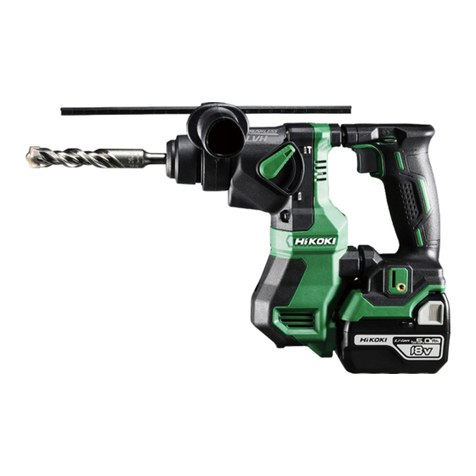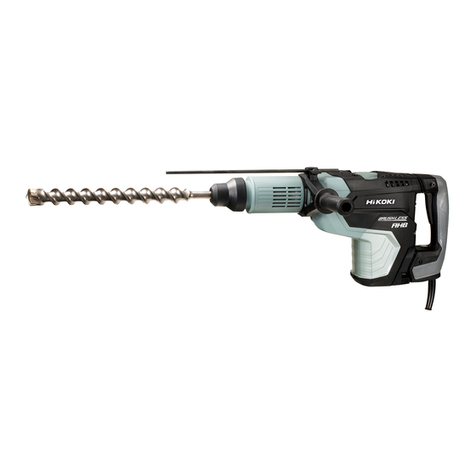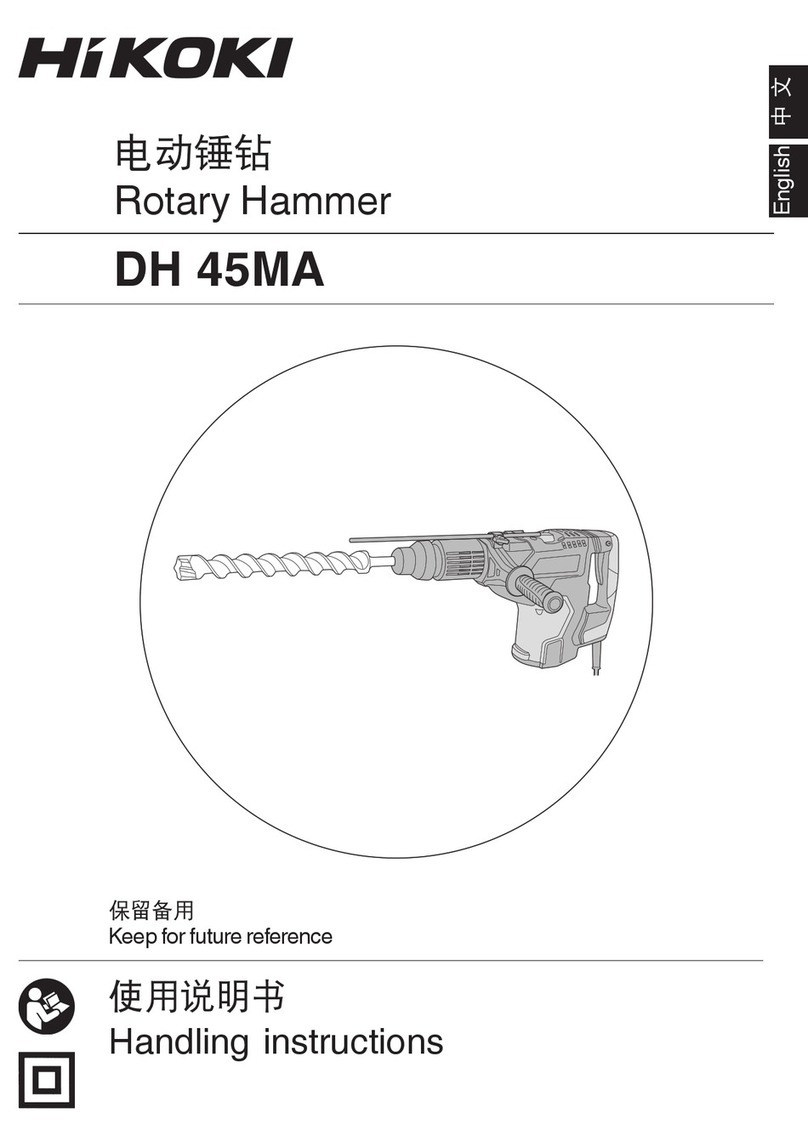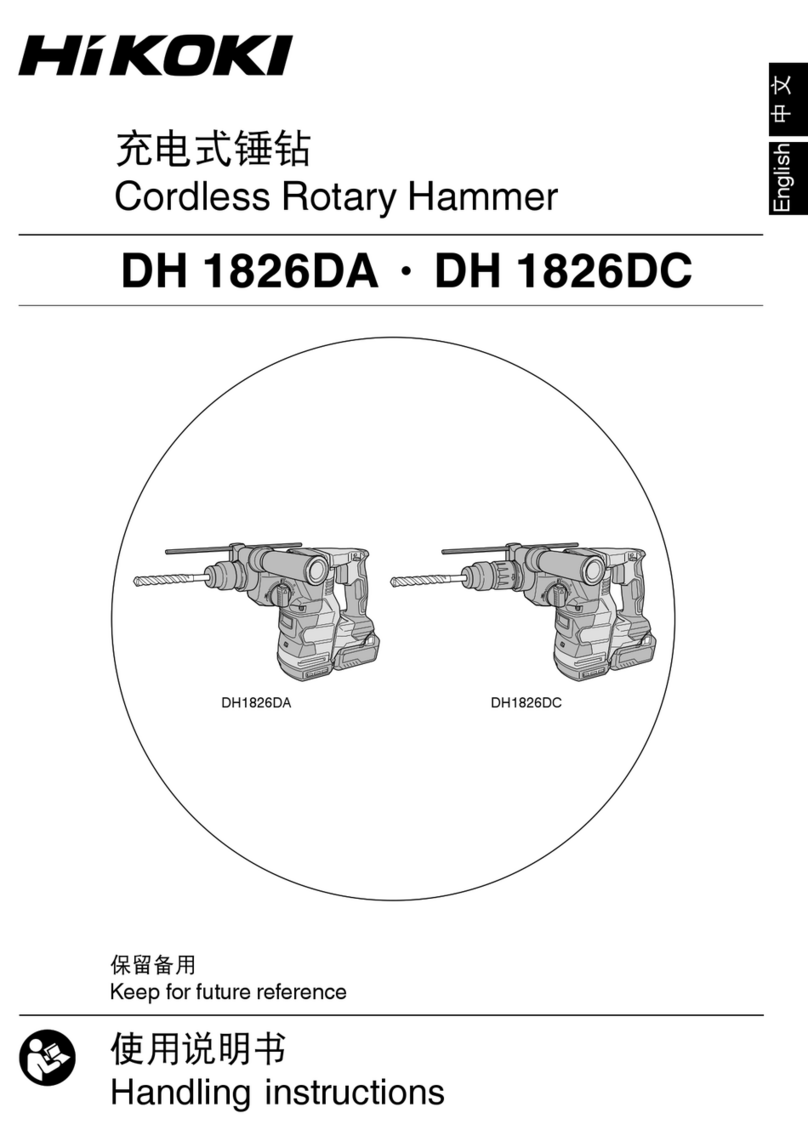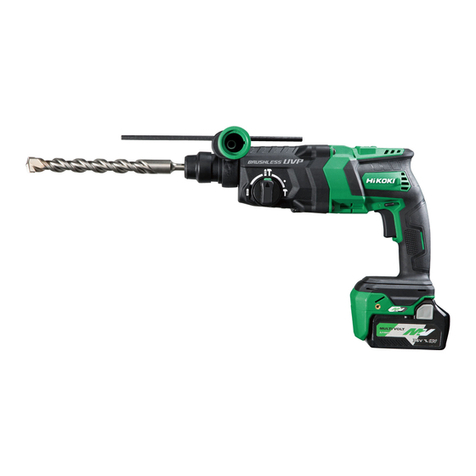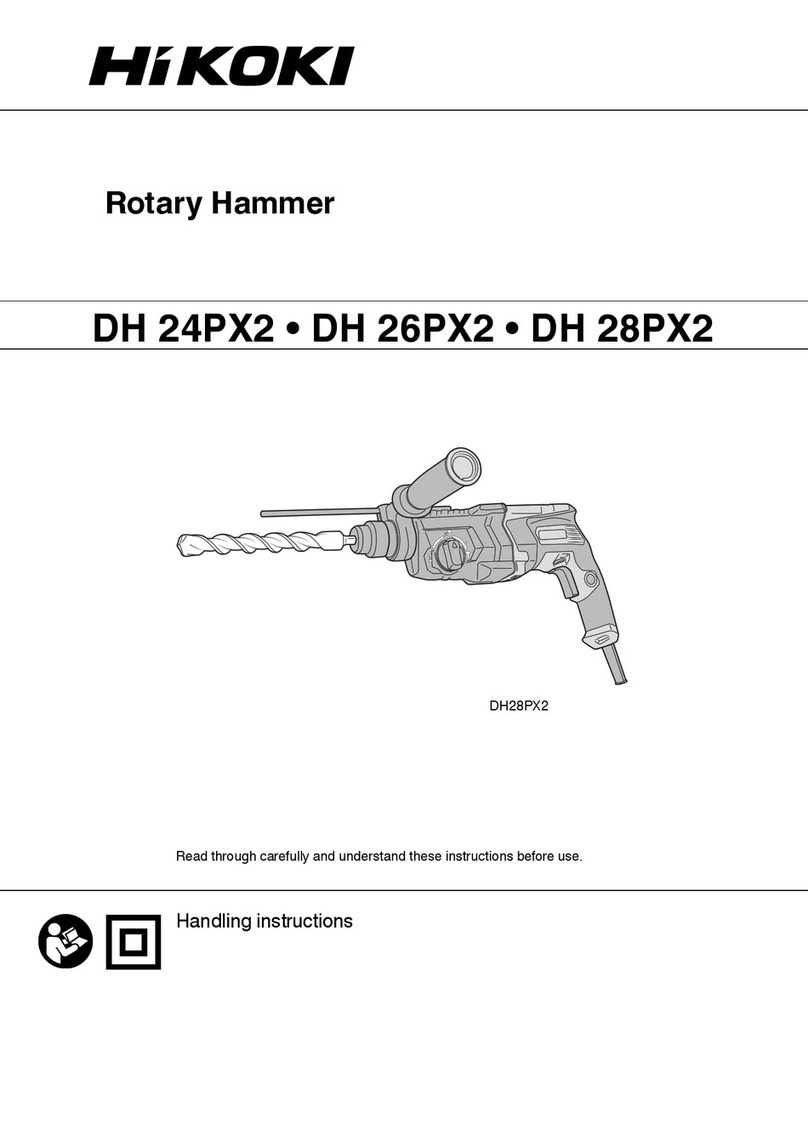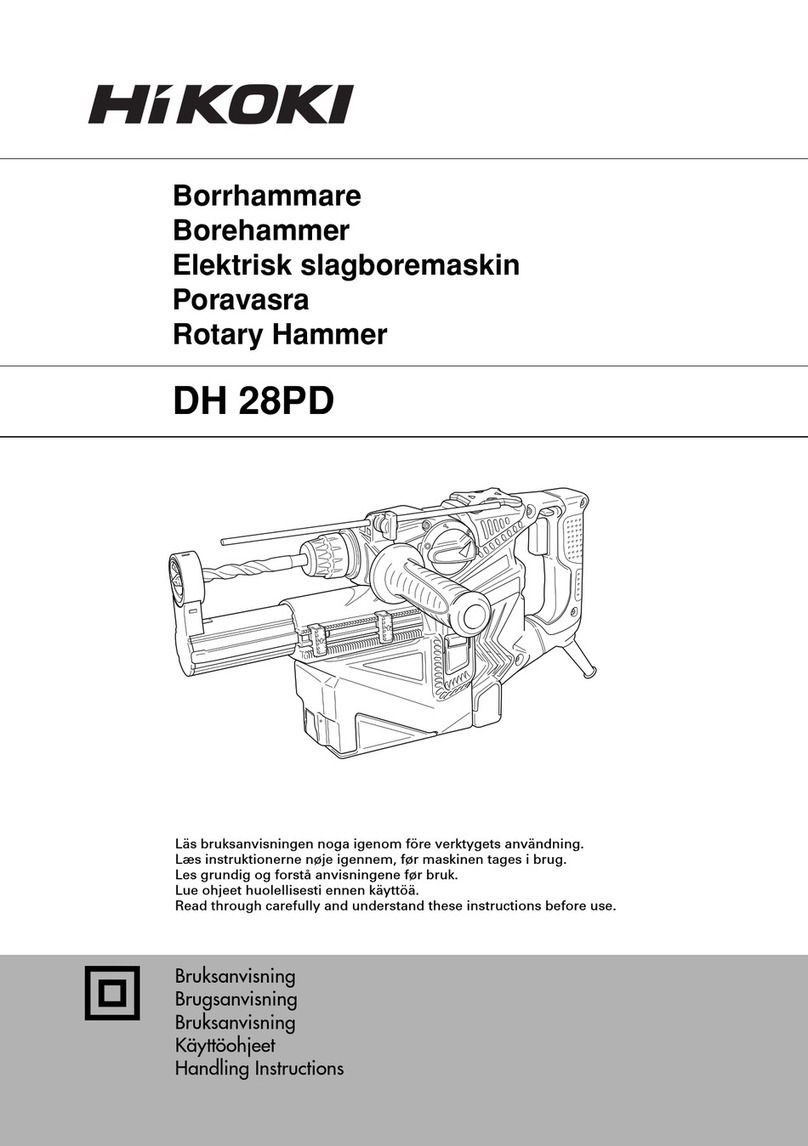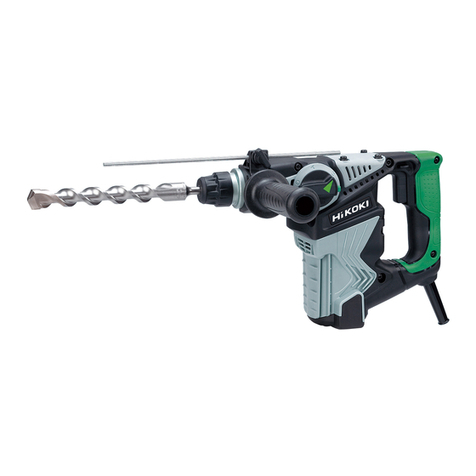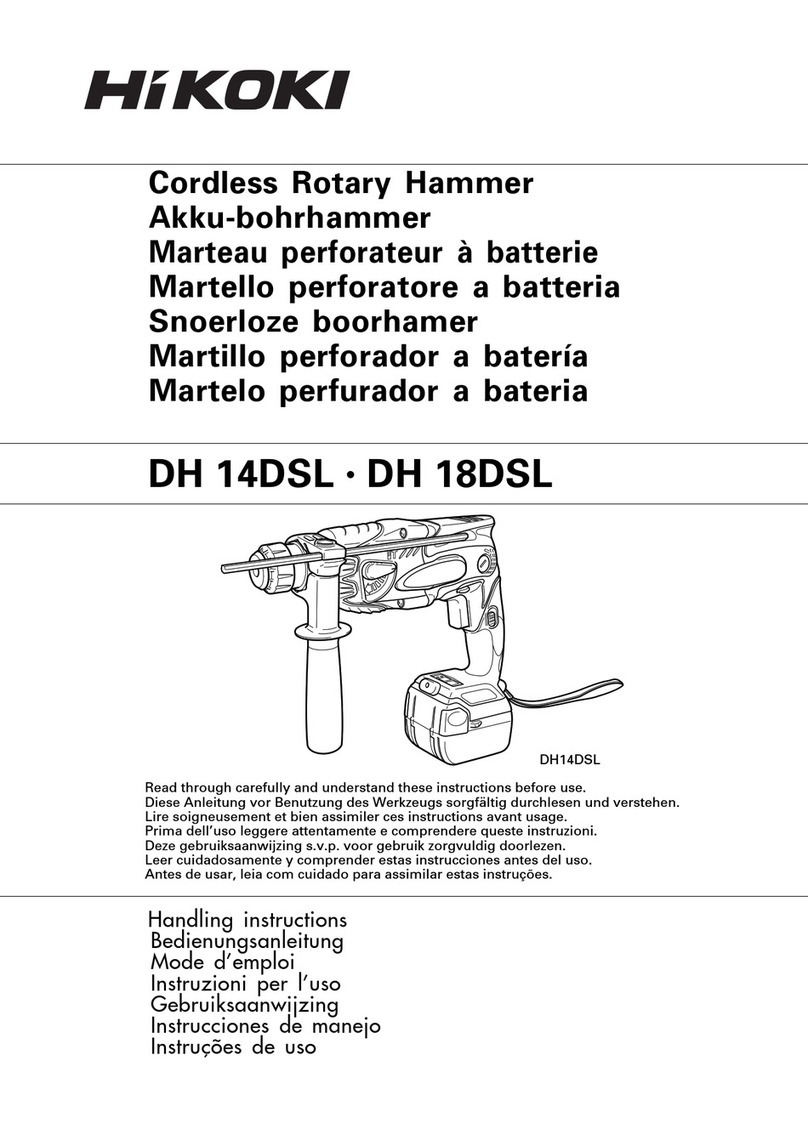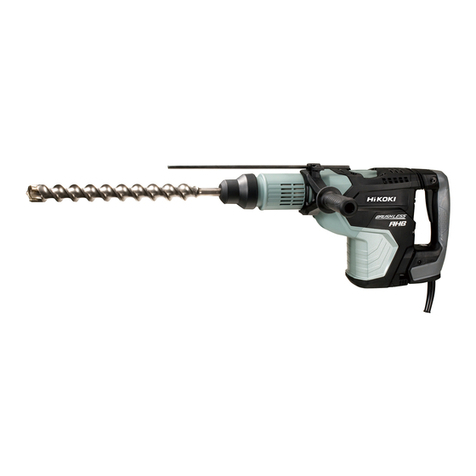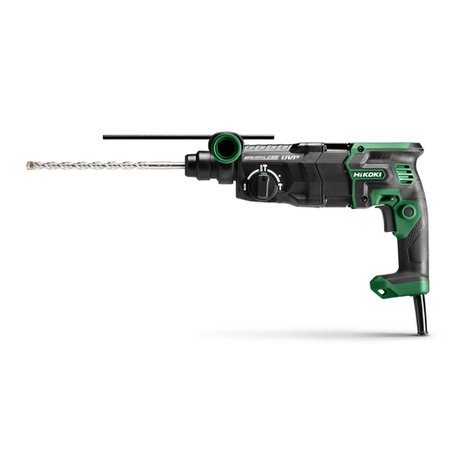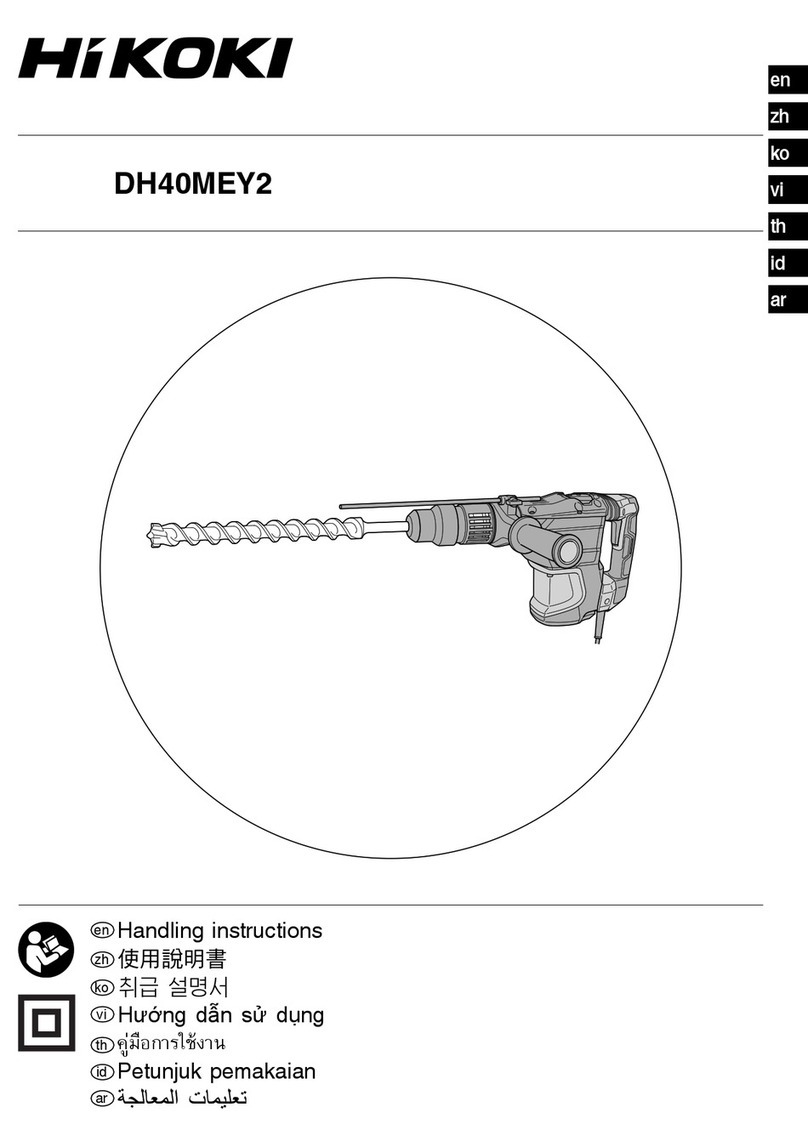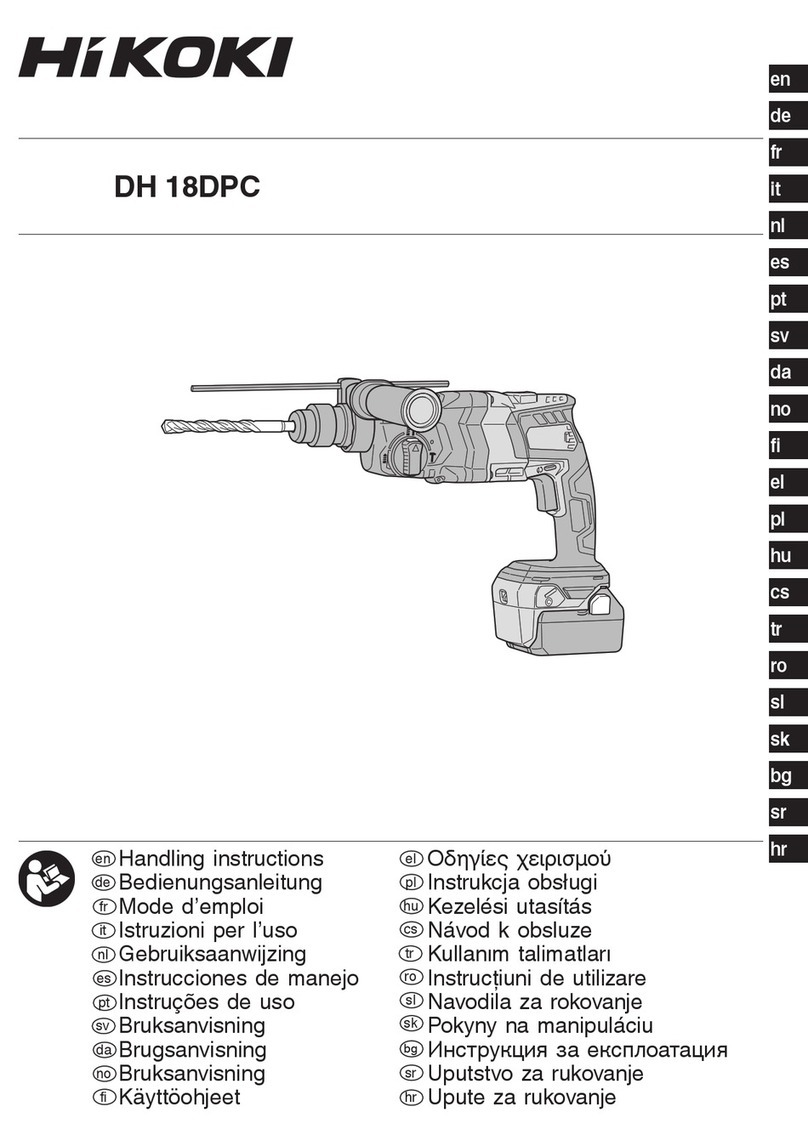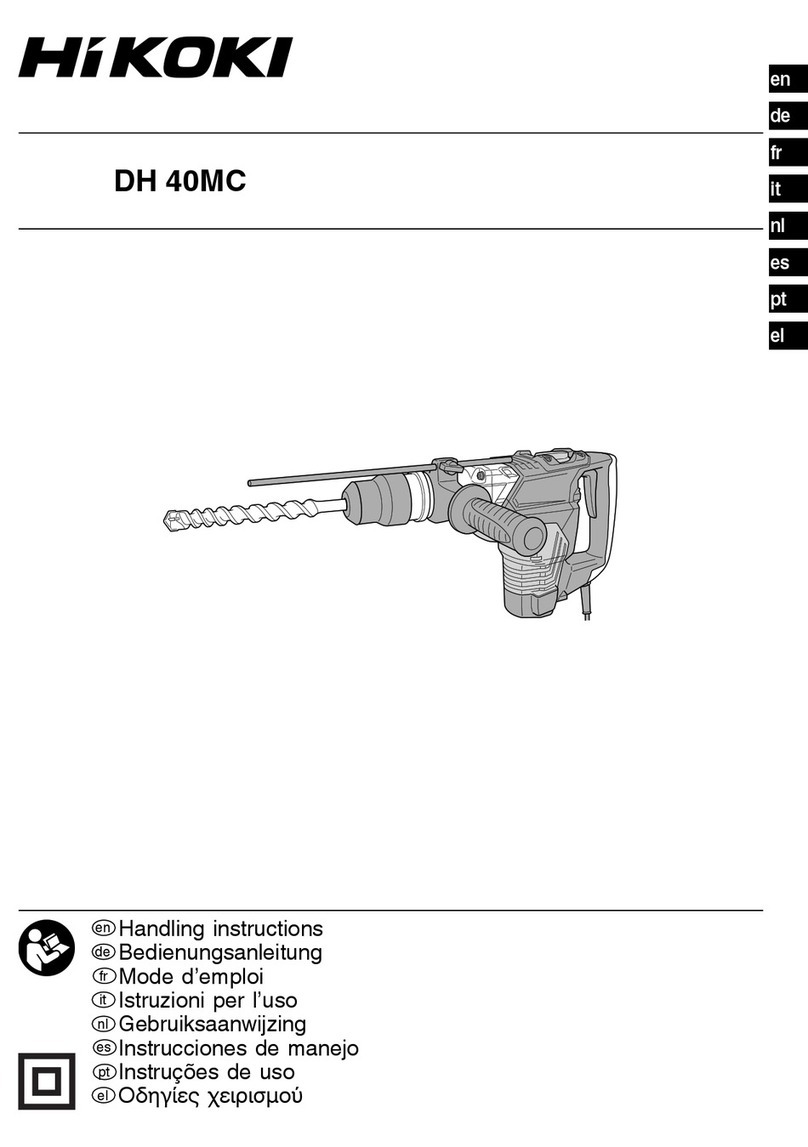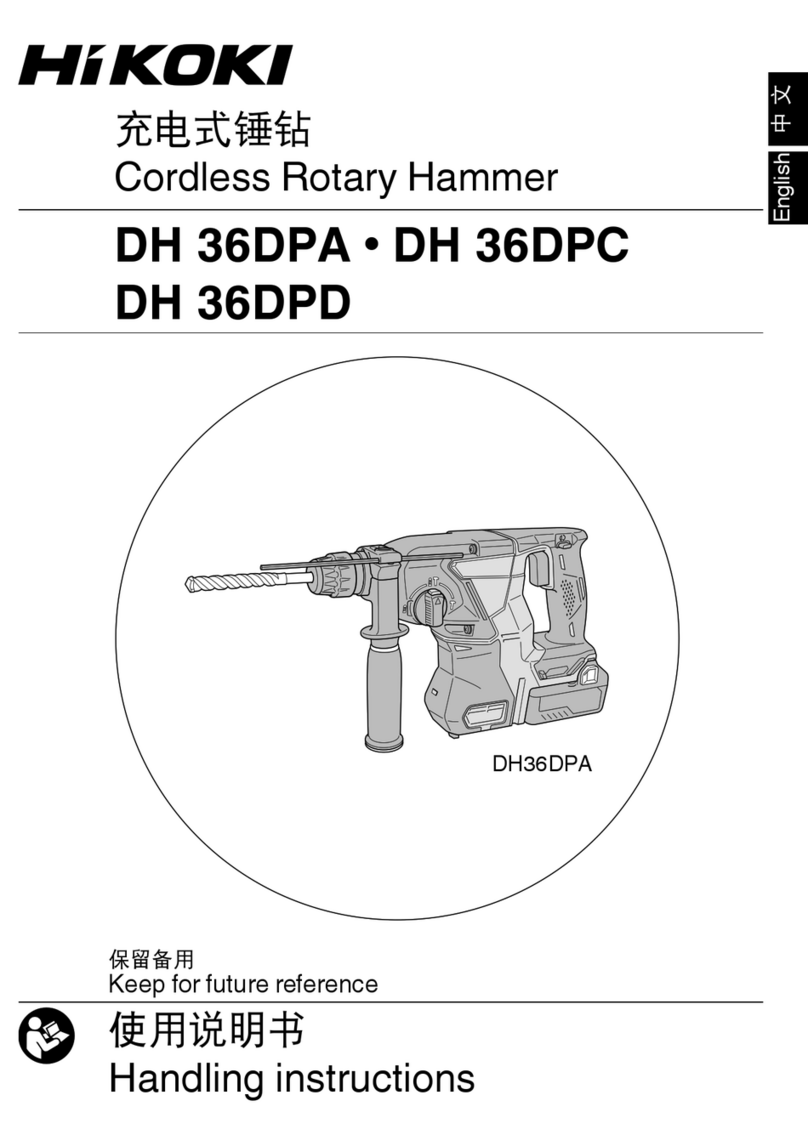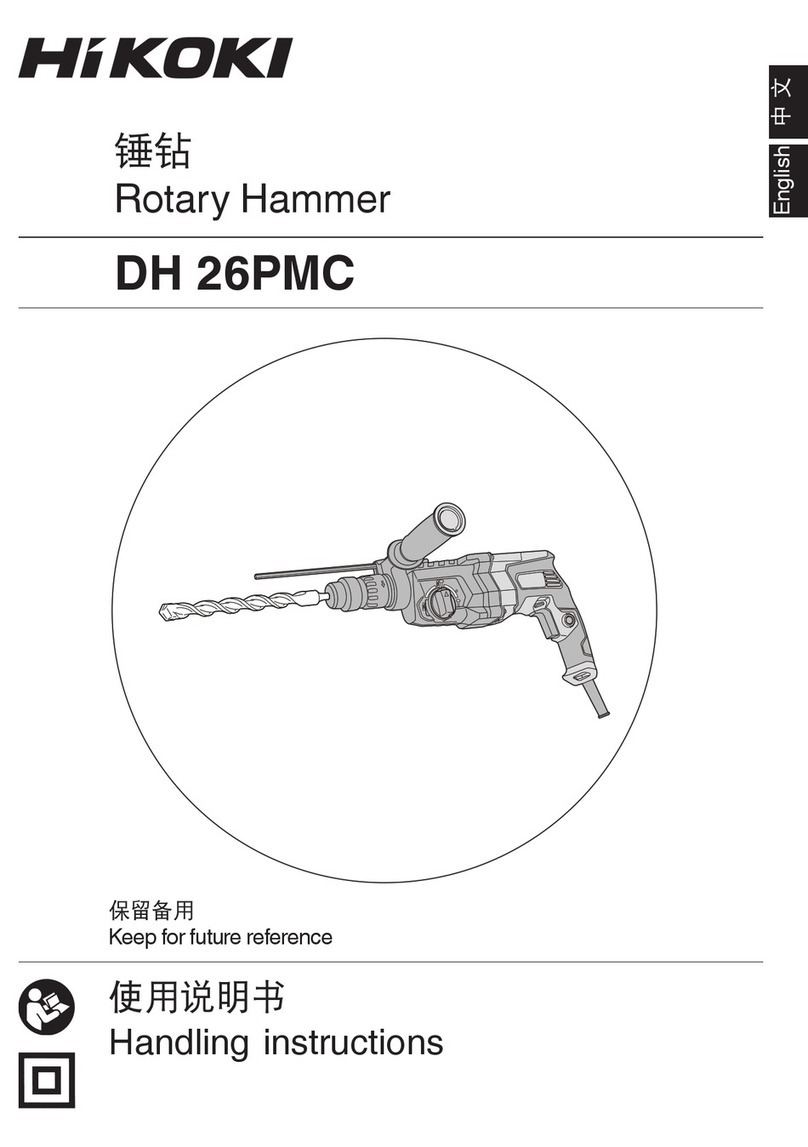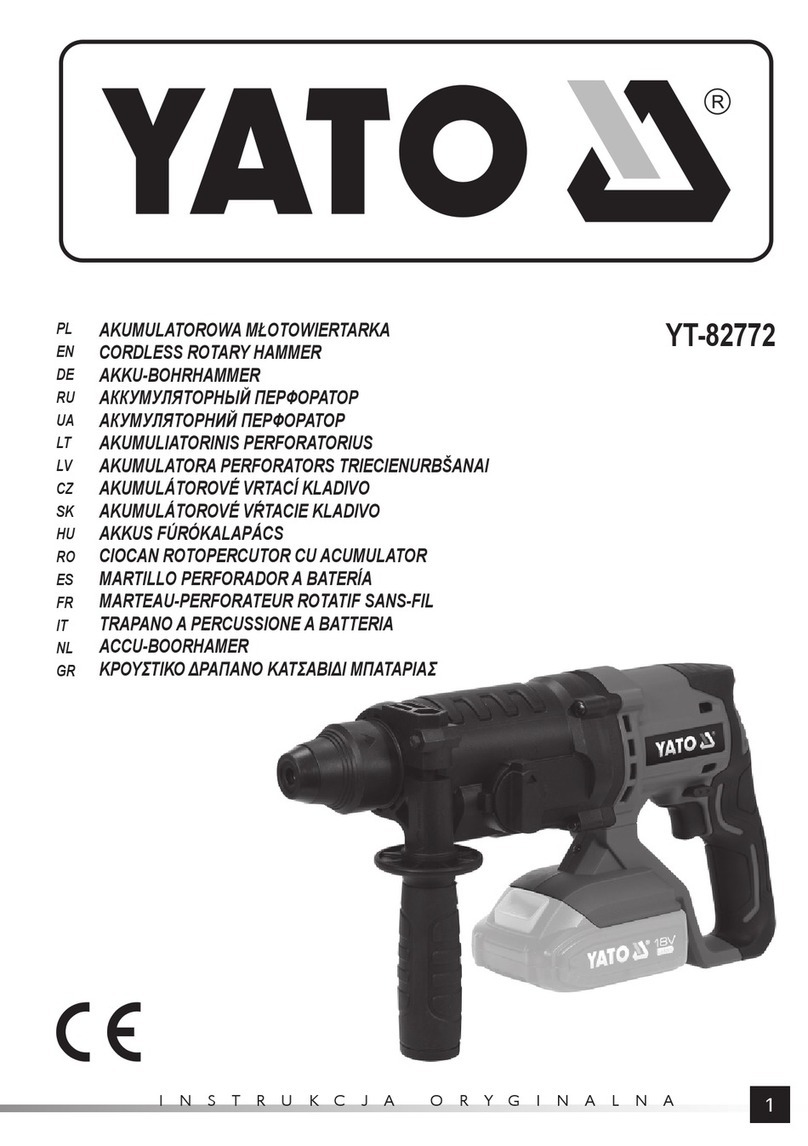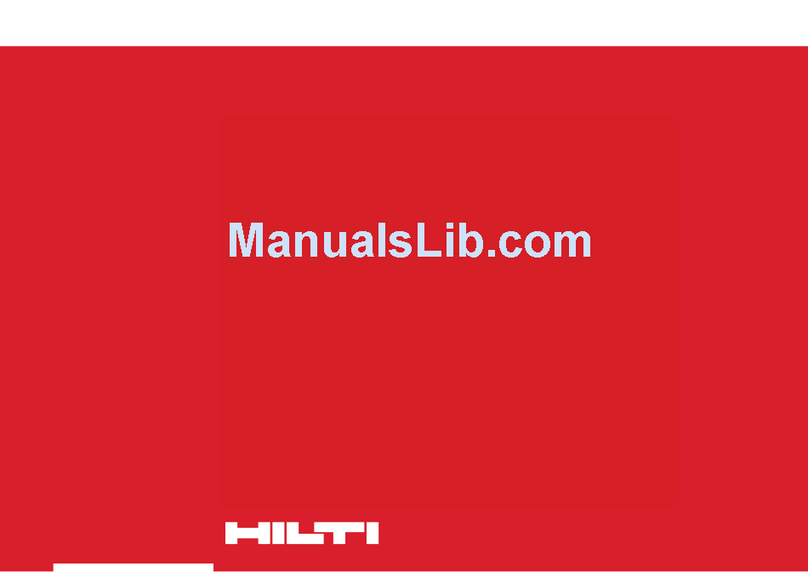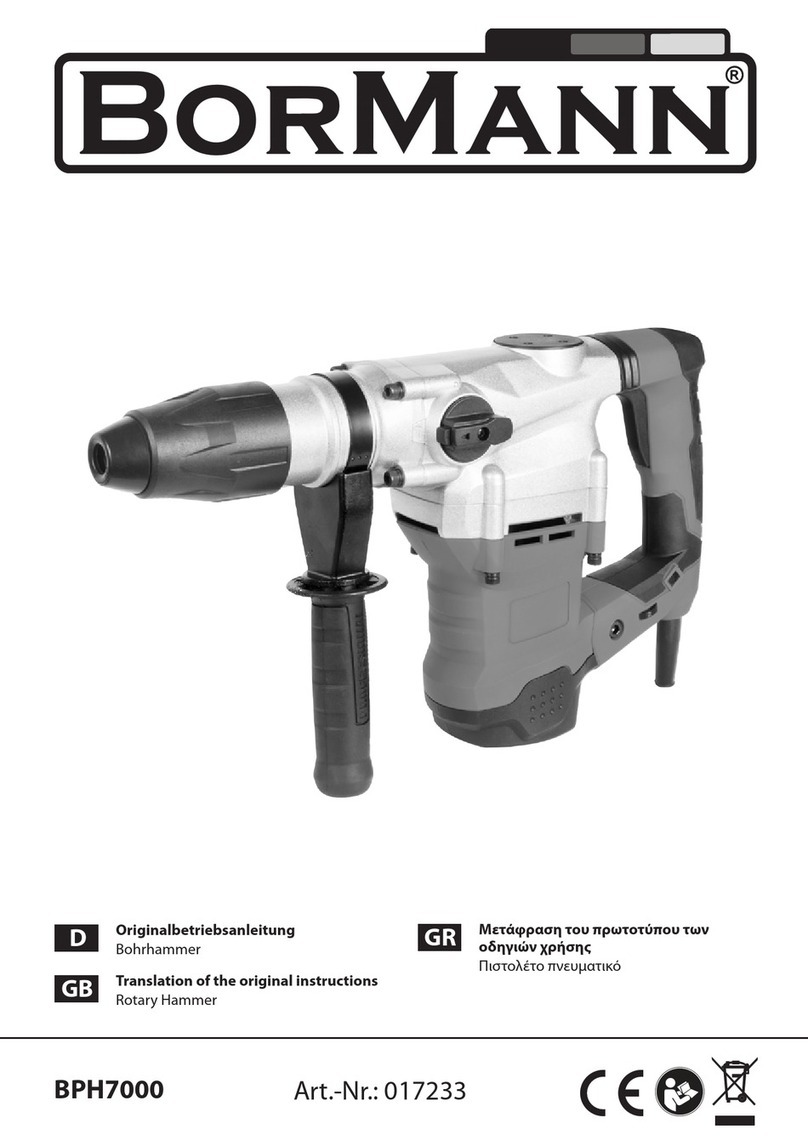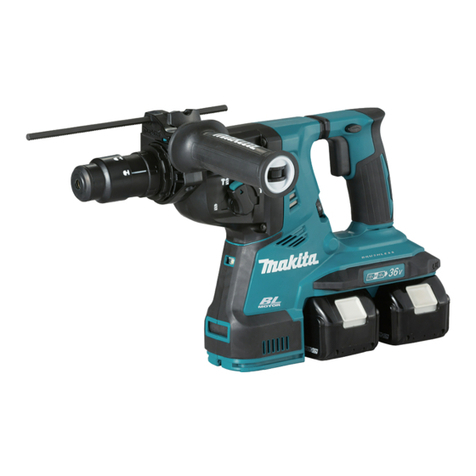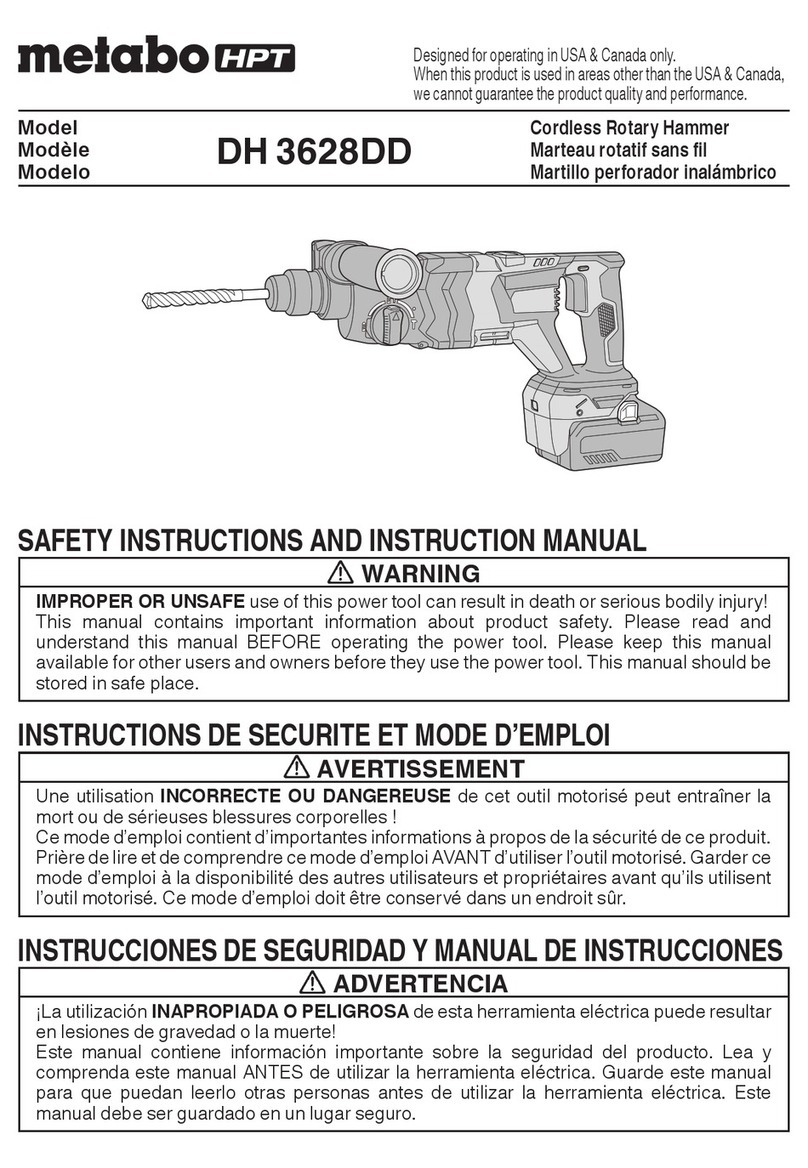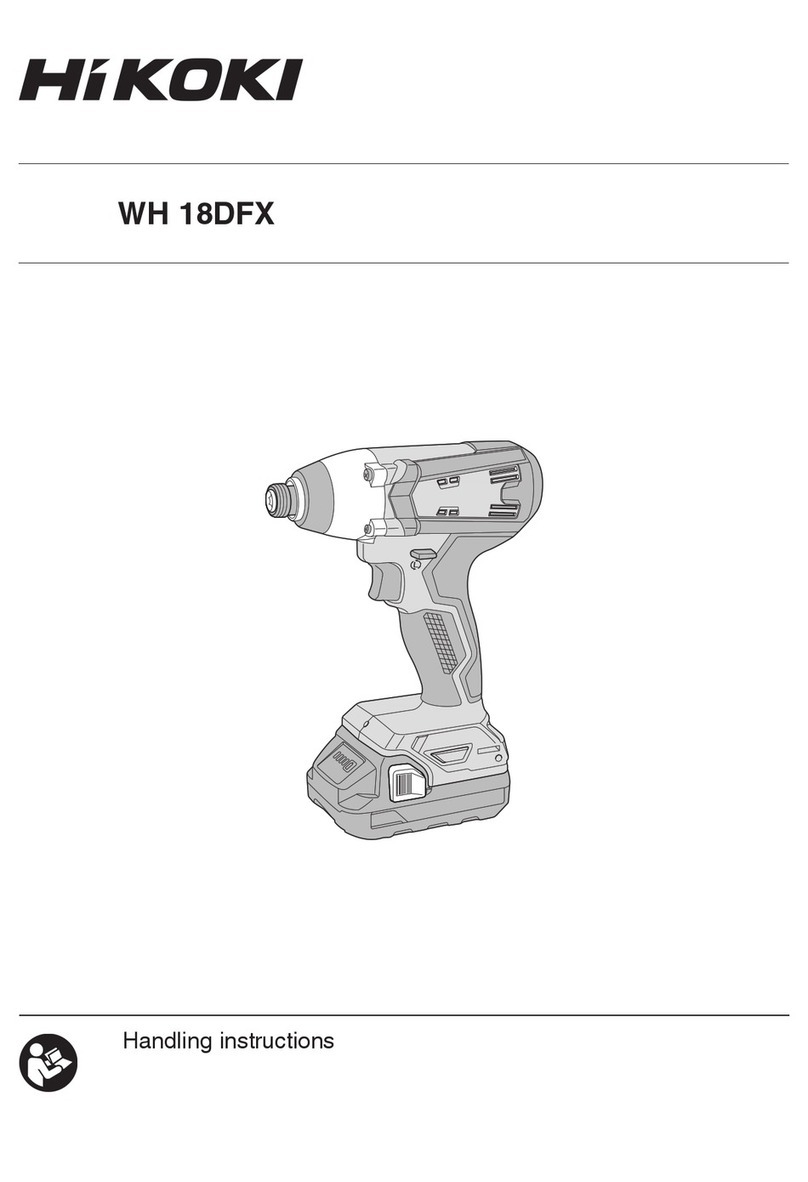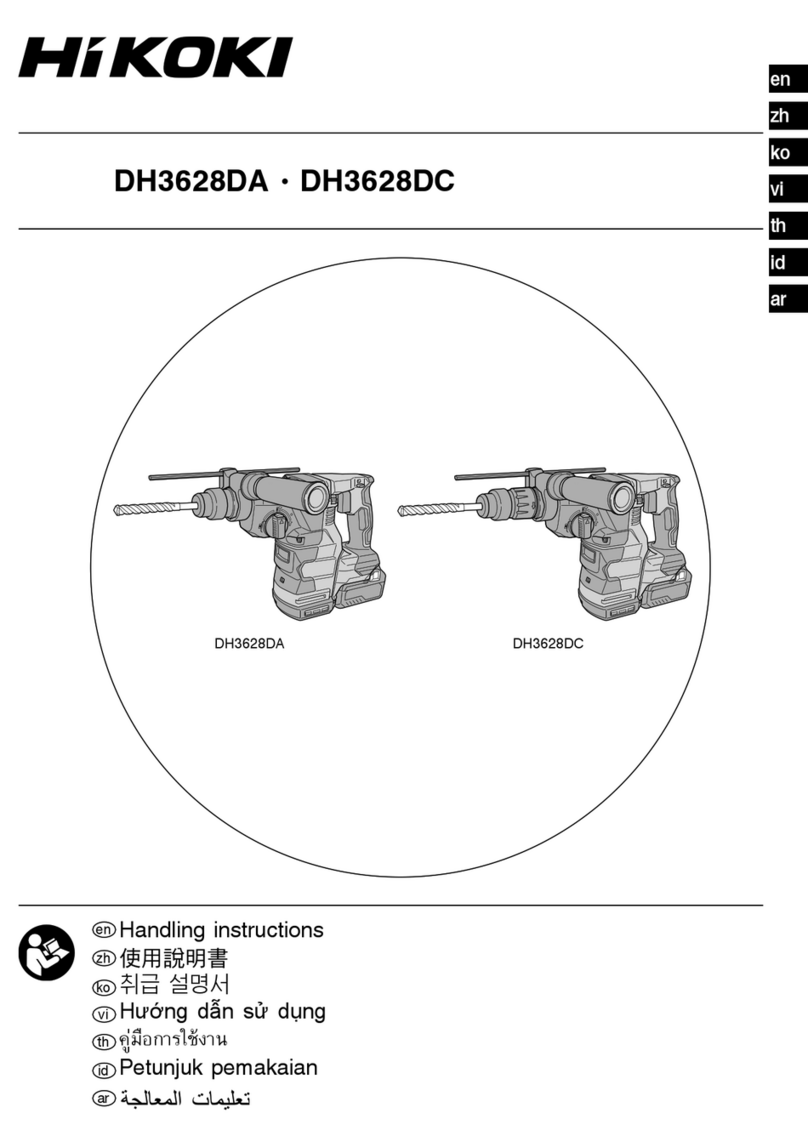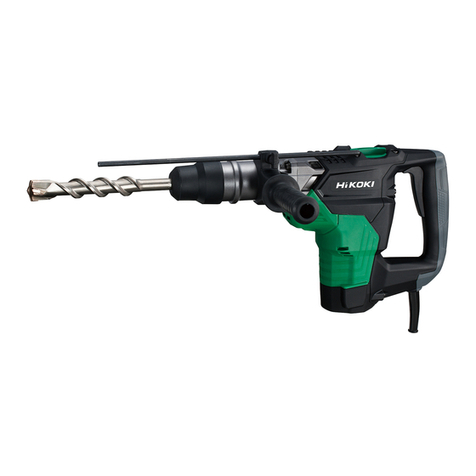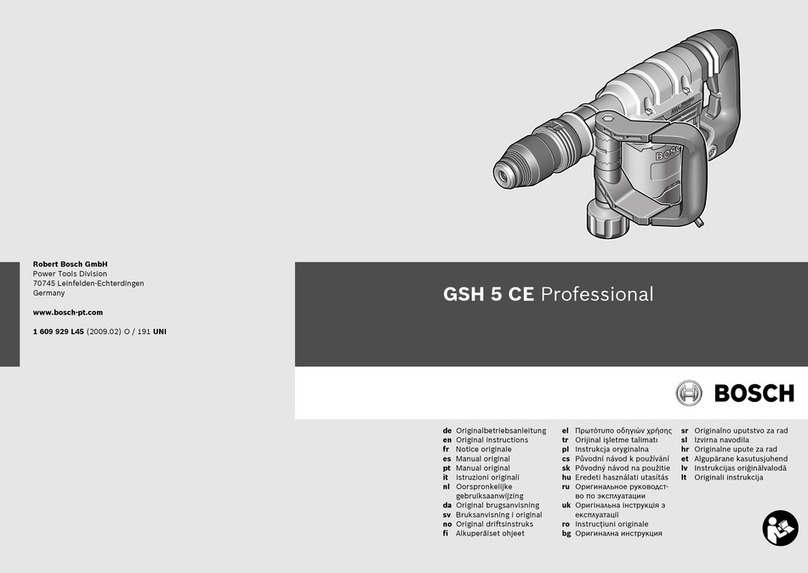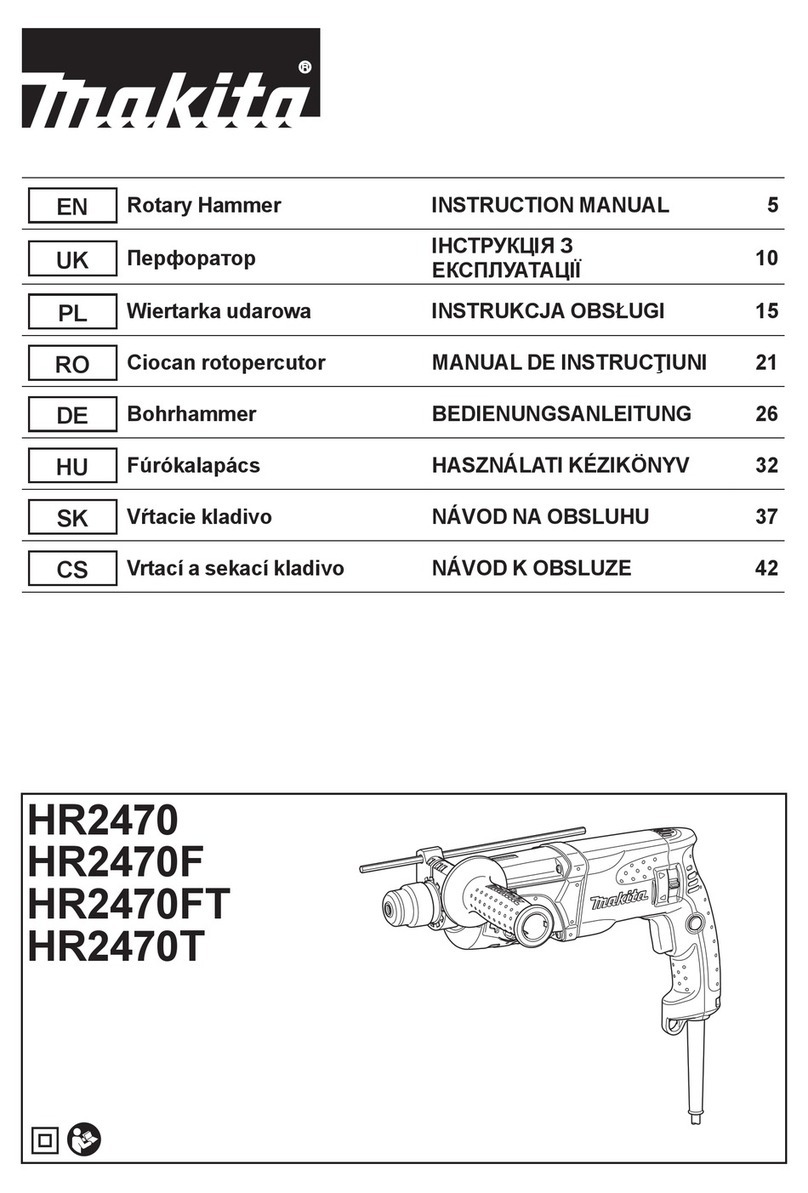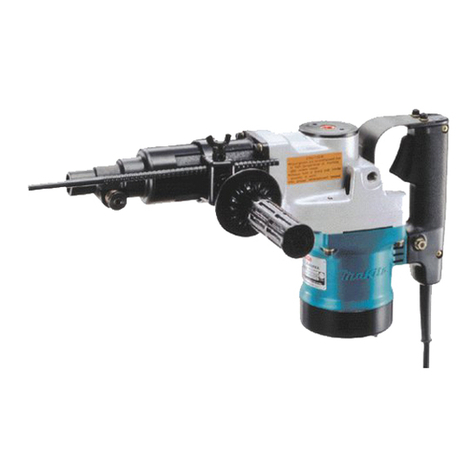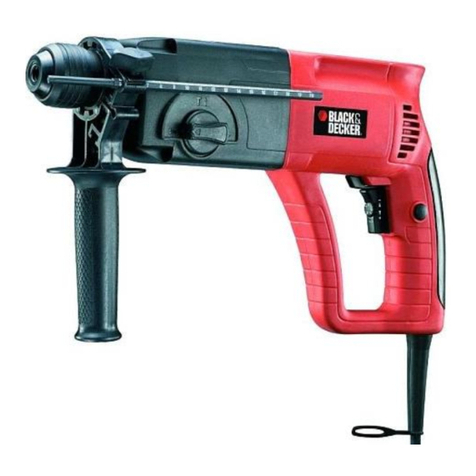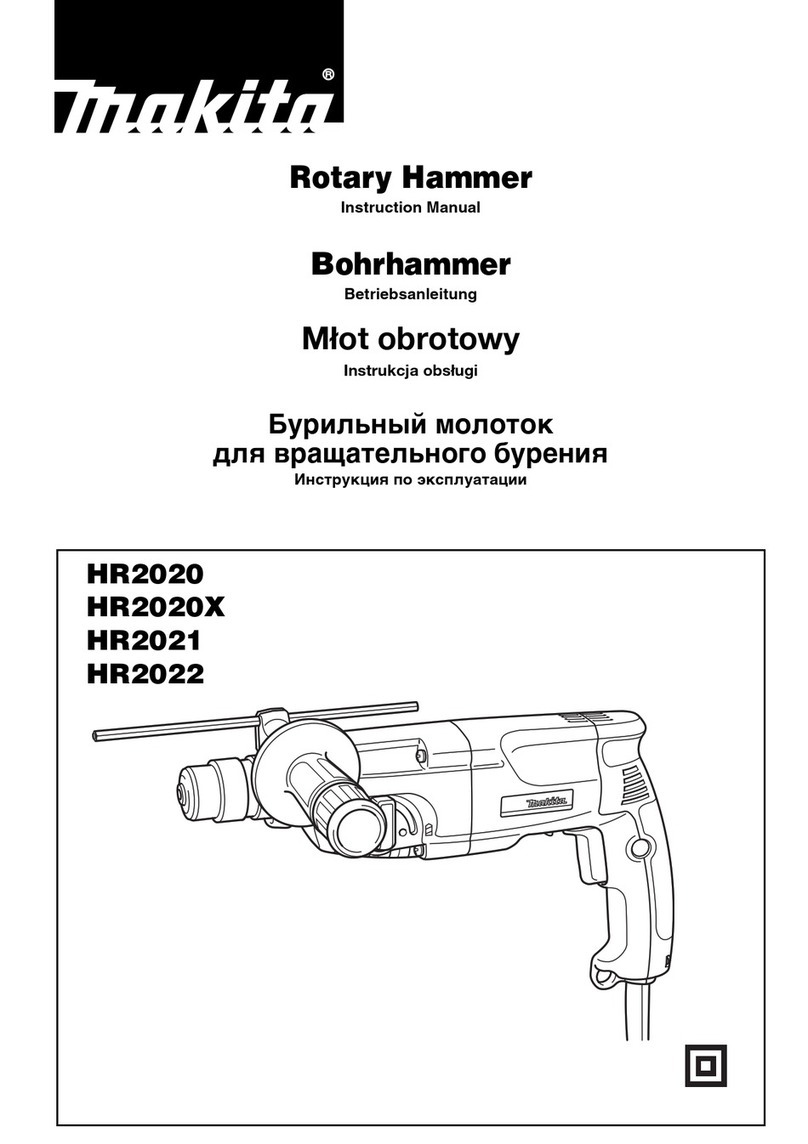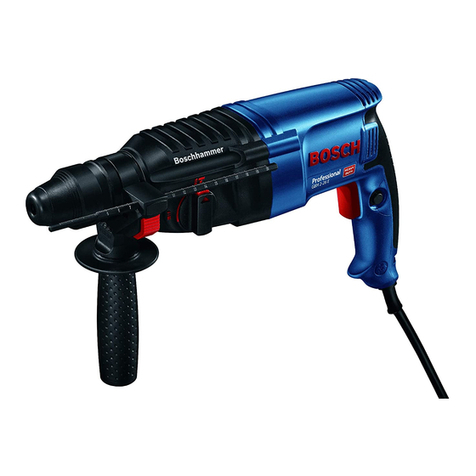
7
EnglishEnglish
c) When battery pack is not in use, keep it away
from other metal objects, like paper clips, coins,
keys, nails, screws or other small metal objects,
that can make a connection from one terminal to
another.
Shorting the battery terminals together may cause
burns or a fire.
d) Under abusive conditions, liquid may be ejected
from the battery; avoid contact. If contact
accidentally occurs, flush with water. If liquid
contacts eyes, additionally seek medical help.
Liquid ejected from the battery may cause irritation or
burns.
6) Service
a) Have your power tool serviced by a qualified
repair person using only identical replacement
parts.
This will ensure that the safety of the power tool is
maintained.
PRECAUTION
Keep children and infirm persons away.
When not in use, tools should be stored out of reach of
children and infirm persons.
CORDLESS ROTARY HAMMER
SAFETY WARNINGS
1. Wear ear protectors
Exposure to noise can cause hearing loss.
2. Use auxiliary handle(s), if supplied with the tool.
Loss of control can cause personal injury.
3. Hold power tool by insulated gripping surfaces,
when performing an operation where the cutting
accessory may contact hidden wiring.
Cutting accessory contacting a "live" wire may make
exposed metal parts of the power tool "live" and could
give the operator an electric shock.
ADDITIONAL SAFETY WARNINGS
1. Do not allow foreign matter to enter the hole for
connecting the rechargeable battery.
2. Never disassemble the rechargeable battery and
charger.
3. Never short-circuit the rechargeable battery.
Shortcircuiting the battery will cause a great electric
current and overheat. It results in burn or damage to the
battery.
4. Do not dispose of the battery in fire. If the battery is burnt,
it may explode.
5. When using this unit continuously, the unit may overheat,
leading to damage in the motor and switch. Please leave
it without using it for approximately 15 minutes.
6. Do not insert object into the air ventilation slots of the
charger. Inserting metal objects or inflammables into the
charger air ventilation slots will result in electrical shock
hazard or damaged charger.
7. Bring the battery to the shop from which it was purchased
as soon as the post-charging battery life becomes too
short for practical use. Do not dispose of the exhausted
battery.
8. Before starting to break, chip or drill into a wall, floor or
ceiling, thoroughly confirm that such items as electric
cables or conduits are not buried inside.
9. Ensure that the power switch is in the OFF position. If the
battery is installed while the power switch is in the ON
position, the power tool will start operating immediately,
which could cause a serious accident.
10. Do not touch the bit during or immediately after
operation. The bit becomes very hot during operation
and could cause serious burns.
11. Always hold the body handle and side handle of the
power tool firmly. Otherwise the counterforce produced
may result in inaccurate and even dangerous operation.
12. Wear a dust mask
Do not inhale the harmful dusts generated in drilling or
chiseling operation. The dust can endanger the health of
yourself and bystanders.
13. Make sure that the battery is installed firmly. If it is at all
loose it could come offand cause an accident.
14. To prevent accidents, make sure to turn the switch off
and pull out the battery before changing accessories,
storing, carrying or when not using the tools.
15. Mounting the drill bit
○To prevent accidents, make sure to turn the switch off
and pull out the battery.
○When using tools such as bull points, drill bits, etc.,
make sure to use the genuine parts designated by our
company.
○Clean the shank portion of the drill bit.
○Check the latching by pulling on the drill bit.
16. Operate the change lever only when the motor is at a
full stop. Operating the change lever while the motor is
running may cause the tip tool to unexpectedly rotate
and result in an accident. (Fig. 9)
17. Rotation + hammering
When the drill bit touches construction iron bar, the bit
will stop immediately and the rotary hammer will react
to revolve. Therefore firmly tighten the side handle, hold
the body handle and side handles.
18. Rotation only
○To drill wood or metal material using the drill chuck and
chuck adapter (optional accessories).
○Application of force more than necessary will not only
expedite the work, but will deteriorate the tip edge of the
drill bit and reduce the service life of the rotary hammer
in addition.
○Drill bits may snap offwhile withdrawing the rotary
hammer from the drilled hole. For withdrawing, it is
important to use a pushing motion.
○Do not attempt to drill anchor holes or holes in concrete
with the machine set in the rotation only function.
○Do not attempt to use the rotary hammer in the rotation
and striking mode with the drill chuck and chuck adapter
attached. This would seriously shorten the service life of
every component of the machine.
19. Do not look directly into the light. Such actions could
result in eye injury.
Wipe offany dirt or grime attached to the lens of the LED
light with a soft cloth, being careful not to scratch the
lens.
Scratches on the lens of the LED light can result in
decreased brightness.
CAUTION ON LITHIUM-ION BATTERY
To extend the lifetime, the lithium-ion battery equips with the
protection function to stop the output.
In the cases of 1 to 3 described below, when using this
product, even if you are pulling the switch, the motor may
stop. This is not the trouble but the result of protection
function.
1. When the battery power remaining runs out, the motor
stops.
In such a case, charge it up immediately.
2. If the tool is overloaded, the motor may stop. In this
case, release the switch of tool and eliminate causes of
overloading. After that, you can use it again.
3. If the battery is overheated under overload work, the
battery power may stop.
In this case, stop using the battery and let the battery
cool. After that, you can use it again.
Furthermore, please heed the following warning and caution.
0000BookDH18DPBAsia.indb70000BookDH18DPBAsia.indb7 2020/10/0218:00:252020/10/0218:00:25
